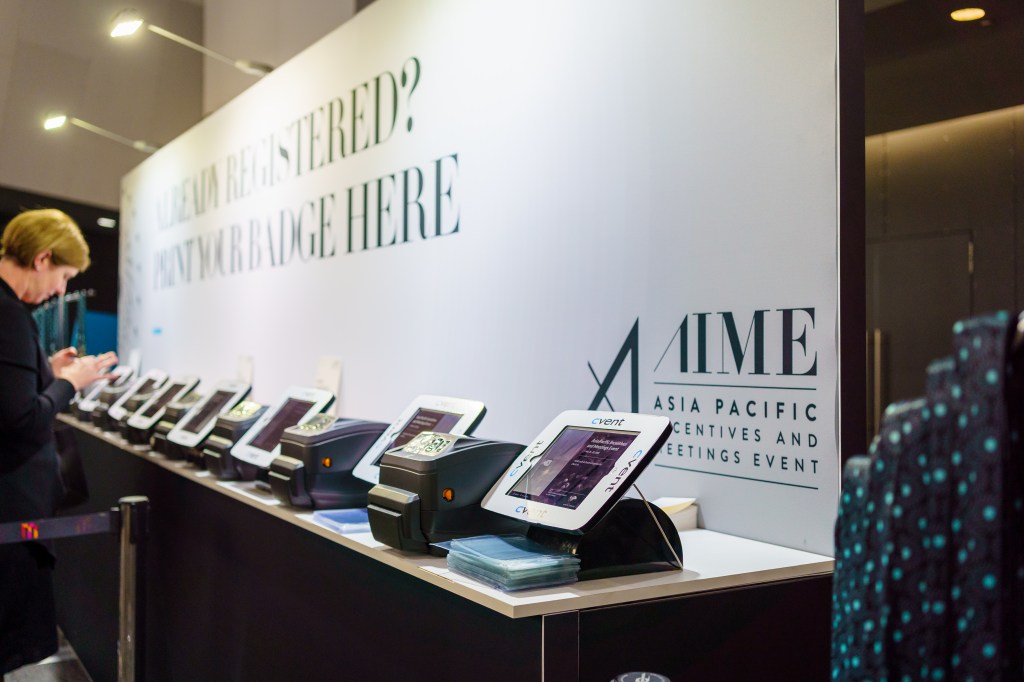Empowering Decision Making: The Transformative Power of Event Technology
BRANDVOICE – SPECIAL FEATURE

In the heart of our technology-driven era, one might imagine the Australian event industry to be sailing smoothly on a sea of seamless digital coordination. Yet, a stark reality looms: the industry is grappling with disintegrated technology, where data fragmentation reigns supreme, creating a maze of confusion and inefficiencies. The disparate technologies thrown together, resulting in a mountain of data scattered across the various stages of an event’s lifecycle, have become the event industry’s most potent adversary.
Events, with their capacity to facilitate powerful connections, generate meaningful conversations, and fuel education and inspiration for attendees, have grown into an indispensable tool for businesses. In fact, in-person events are the top demand-generation tactic for B2B companies. The entire history of corporate event planning has been a steady evolution of people coming together to interact, inform, and influence. And their future will continue to progress along the same three tracks to attain the key objectives of bonding, branding, and business. Studies show that corporate meetings and events account for an estimated 1-3% of a company’s top-line revenue, highlighting the reality that events drive business.
Businesses place events purposefully in their marketing plans to better understand their target demographic. The opportunity to interact face-to-face with attendees provides a unique platform for businesses to truly understand their audience. Event programs produce thousands of high-value touchpoints that allow organisations to quickly gather actionable insights into buyer interests and, ultimately, drive revenue. In contrast, a digital ad is likely to give you an IP address, basic location, and account data. Similarly, opening an email and downloading a piece of content may just give you an email address, first name, last name, and organisation name.
The sheer volume of touchpoints you can gather, and the quality and completeness of audience data you get from events puts them in a class of their own. Knowing your audience, what motivates them, what interests them and what will convert them into customers is the true value you get from tracking and analysing the data you receive from an event. Acquiring the data is just the start; the real value lies in activating it and leveraging its potential.
Due to the ability of events to generate deep engagement with a more qualified audience, an event attendee is more likely to convert into a customer. In comparison, other marketing tactics like social media, advertising or PR could take months to bear fruit. This is why, for many organisations, leads generated from events make up 20% or more of their marketing department’s annual leads.
Unfortunately, most organisations fail to fully leverage events or maximise their potential. Events are still undervalued largely due to the inability of organisations to maximise this marketing channel. For the longest time, executing events as a marketing tactic has been an extremely expensive and directionless process for most firms.
A big part of the problem has been the fragmented nature of event data – the data is dispersed throughout different parts of the event management process and attendee journey due to the disparate tech being used across an event lifecycle. According to a study by Forrester Consulting, over 1/3rd of organisations use six or more event technology and/or service partners to host their most complex events. This leaves data in separate silos, needing manual intervention before sales and marketing teams can do anything with it. Furthermore, when this information stays separated, it becomes impossible to understand attendees on a deeper level and truly leverage the data that has been gathered. While the technology to solve this problem exists, the awareness about the existence and usefulness of such technology is surprisingly low. Not to mention that spending on event technology is also considered discretionary spending – a ‘desire’ rather than a ‘necessity’.
Gone are the days when event planners were just coordinators working behind the scenes. Due to the impact events have on an organisation’s bottom line, event planners of today have now taken their rightful seat in the boardroom. Measuring, understanding, and presenting the impact of an event and its success to key stakeholders has now become one of the key responsibilities of planners around the world. It is not just about organising successful events but providing proof of their impact on the business, be it in terms of lead generation, attribution to pipeline, member retention, or brand awareness.

Says Jack Ukil, Head of Cvent Australia, “We have customers across various industries who have embraced the platform approach to gain access to robust data and insights to maximise results. What organisations don’t realise is that not having a holistic view of data also makes them unable to attribute revenue to their events and prove ROI. Without the evidence of impact, resources and attention eventually go to other marketing channels.”
Jack cites the example of one of Cvent’s customers, an event planner at an international staffing and services company. “By leveraging a centralised platform for their meetings and events, they were able to create a financial dashboard to show to stakeholders and prove to the CFO what exactly they were bringing to the table with their events. This success also expanded the events team’s role in the organisation. They have now set an example in the organisation in ways to ensure fiscal clarity and budgetary compliance for their meetings and events.”
Addressing one of the most significant challenges for event organisers today – data security, Jack believes that the platform approach solves this as well. “In a world where data breaches are becoming increasingly common, event organisers need to be extra cautious about the security of their clients’ information. The risk of data breaches is increasing. Therefore, it is essential to have a centralised and secure solution that can safeguard against such risks.”
While investing in event technology remains daunting for some, acknowledging its potential is imperative in our current economy. Jack says, “We recognise how integral events are to driving collaboration, fostering relationships, and delivering success to businesses – but all this can only be achieved through the power of digitisation.”
As we navigate through the ever-evolving event landscape in Australia, it is time to acknowledge the simple truth: the future of events relies heavily on the effective use of technology. Event planners and marketers are at a point where they are expected to do a lot more with a lot less, and they know that to maximise results, technology is the only way forward.